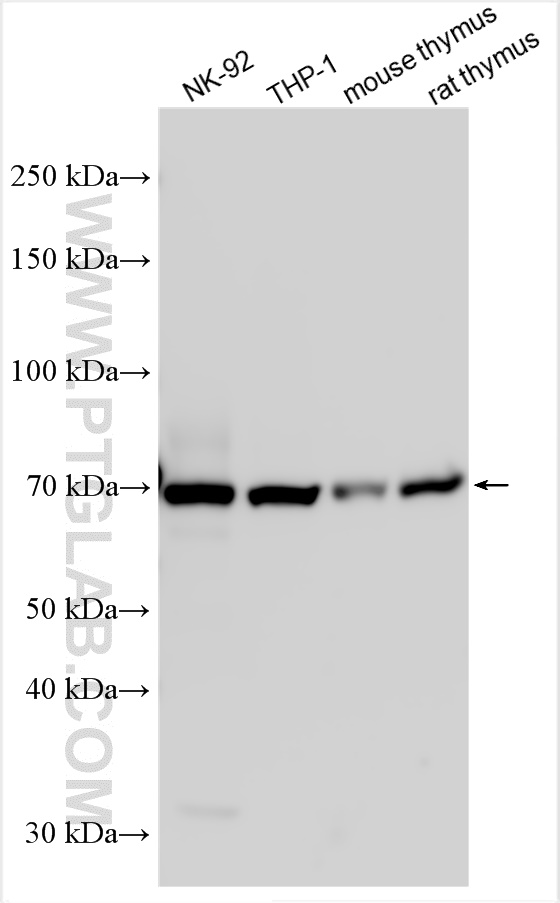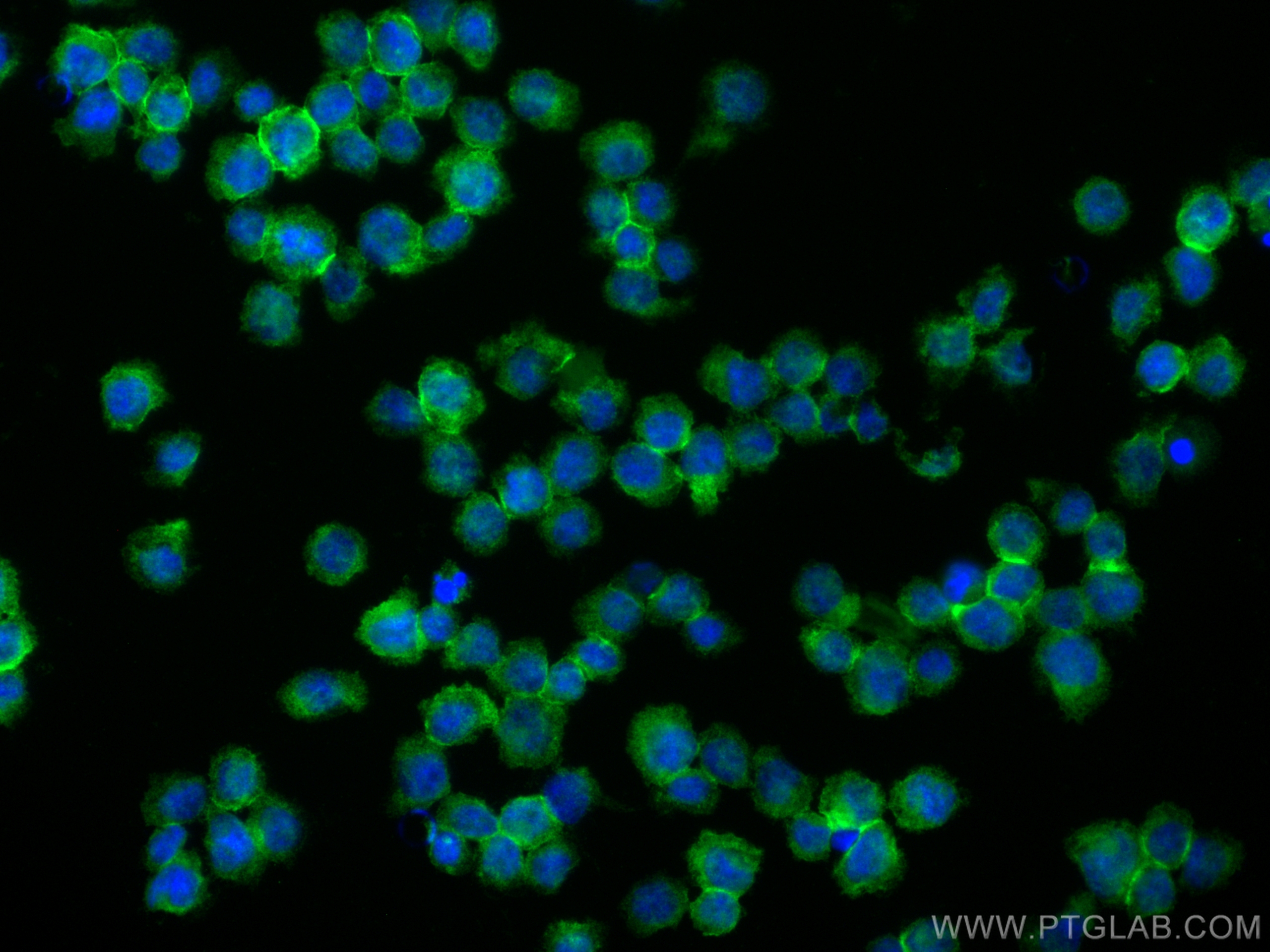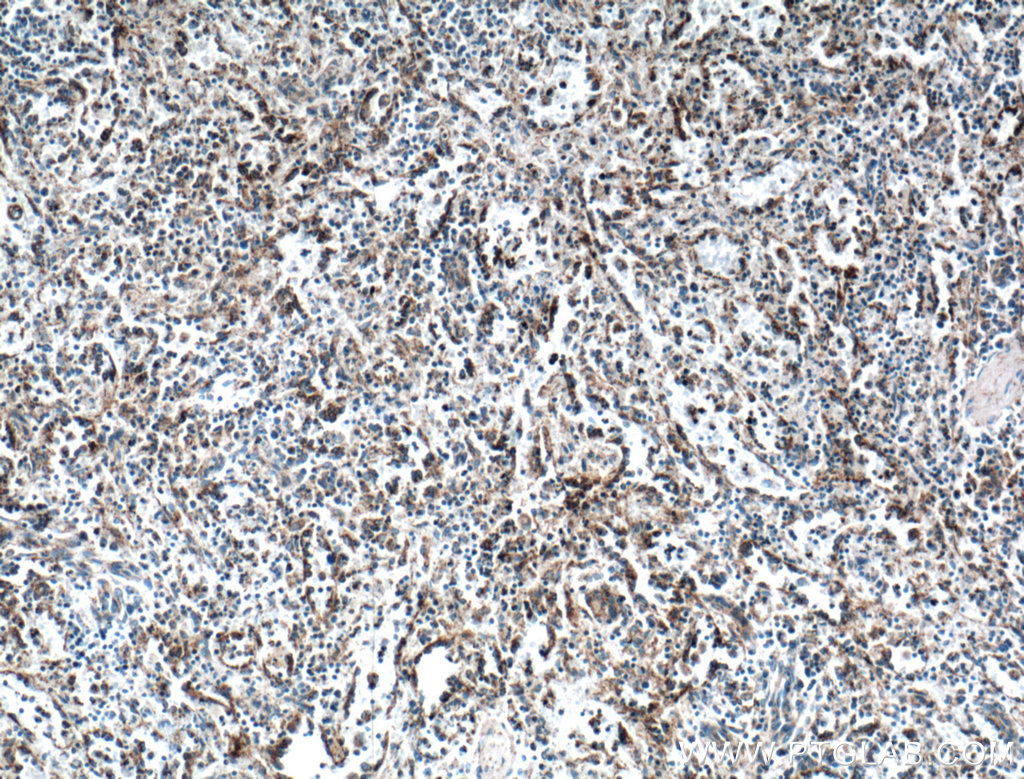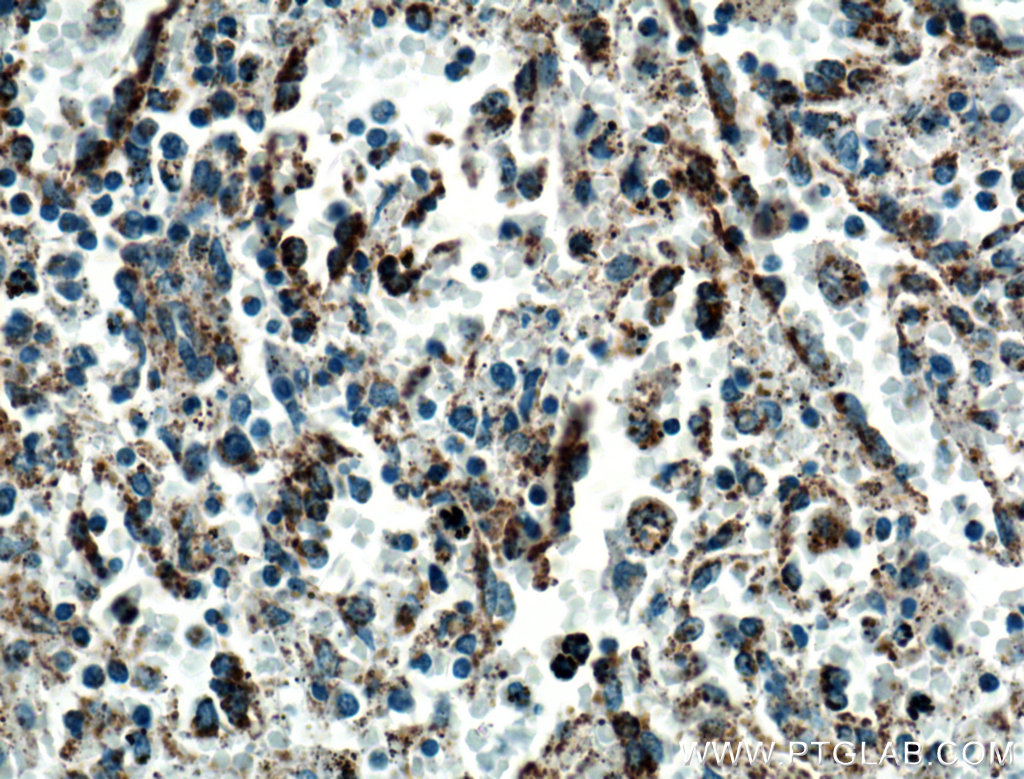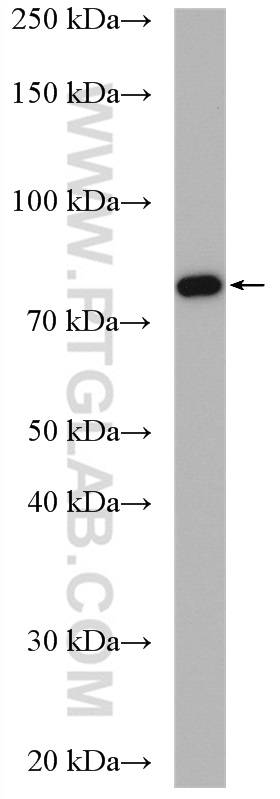验证数据展示
经过测试的应用
| Positive WB detected in | NK-92 cells, Jurkat cells, HEK-293 cells, THP-1 cells, mouse thymus tissue, rat thymus tissue |
| Positive IP detected in | HEK-293 cells |
| Positive IHC detected in | human spleen tissue Note: suggested antigen retrieval with TE buffer pH 9.0; (*) Alternatively, antigen retrieval may be performed with citrate buffer pH 6.0 |
| Positive IF/ICC detected in | THP-1 cells |
推荐稀释比
| 应用 | 推荐稀释比 |
|---|---|
| Western Blot (WB) | WB : 1:500-1:1000 |
| Immunoprecipitation (IP) | IP : 0.5-4.0 ug for 1.0-3.0 mg of total protein lysate |
| Immunohistochemistry (IHC) | IHC : 1:50-1:500 |
| Immunofluorescence (IF)/ICC | IF/ICC : 1:50-1:500 |
| It is recommended that this reagent should be titrated in each testing system to obtain optimal results. | |
| Sample-dependent, Check data in validation data gallery. | |
产品信息
19272-1-AP targets TNFR2 / TNFRSF1B in WB, IHC, IF/ICC, IP, CoIP, ELISA applications and shows reactivity with human, mouse, rat samples.
| 经测试应用 | WB, IHC, IF/ICC, IP, ELISA Application Description |
| 文献引用应用 | WB, IHC, IF, IP, CoIP |
| 经测试反应性 | human, mouse, rat |
| 文献引用反应性 | human, mouse, rat |
| 免疫原 | TNFR2 / TNFRSF1B fusion protein Ag5866 种属同源性预测 |
| 宿主/亚型 | Rabbit / IgG |
| 抗体类别 | Polyclonal |
| 产品类型 | Antibody |
| 全称 | tumor necrosis factor receptor superfamily, member 1B |
| 别名 | CD120b, Etanercept, p75, p75TNFR, p80 TNF alpha receptor, TBP 2, TBPII, TNF R II, TNF R2, TNF R75, TNF Receptor 2, TNF Receptor II, TNF RII, TNFBR, TNFR II, TNFR1B, TNFR2, TNFR80, TNFRSF1B |
| 计算分子量 | 48 kDa |
| 观测分子量 | 70-75 kDa |
| GenBank蛋白编号 | BC052977 |
| 基因名称 | TNFR2 |
| Gene ID (NCBI) | 7133 |
| RRID | AB_10640674 |
| 偶联类型 | Unconjugated |
| 形式 | Liquid |
| 纯化方式 | Antigen affinity purification |
| UNIPROT ID | P20333 |
| 储存缓冲液 | PBS with 0.02% sodium azide and 50% glycerol , pH 7.3 |
| 储存条件 | Store at -20°C. Stable for one year after shipment. Aliquoting is unnecessary for -20oC storage. |
背景介绍
Tumor necrosis factor-alpha (TNFA/TNFSF2) is a multifunctional cytokine that plays a key role in regulating inflammation, immune functions, host defense, and apoptosis (PMID: 16407280). TNFA signals through two distinct cell surface receptors, TNFR1 (TNFRSF1A, CD120a, p55) and TNFR2 (TNFRSF1B, CD120b, p75). TNFR1 is widely expressed, whereas TNFR2 exhibits more restricted expression, being found on CD4 and CD8 T lymphocytes, endothelial cells, microglia, oligodendrocytes, neuron subtypes, cardiac myocytes, thymocytes and human mesenchymal stem cells (PMID: 20489699; 22374304). In contrast to TNFR1, TNFR2 does not have a death domain. TNFR2 only signals for antiapoptotic reactions. However, recent evidence indicates that TNFR2 also signals to induce TRAF2 degradation (PMID: 22374304). Various defects in the TNFR2 pathway, due to polymorphisms in the TNFR2 gene, upregulated expression of TNFR2 and TNFR2 shedding, have been implicated in the pathology of several autoimmune disorders (PMID: 20489699).
实验方案
| Product Specific Protocols | |
|---|---|
| WB protocol for TNFR2 / TNFRSF1B antibody 19272-1-AP | Download protocol |
| IHC protocol for TNFR2 / TNFRSF1B antibody 19272-1-AP | Download protocol |
| IF protocol for TNFR2 / TNFRSF1B antibody 19272-1-AP | Download protocol |
| IP protocol for TNFR2 / TNFRSF1B antibody 19272-1-AP | Download protocol |
| Standard Protocols | |
|---|---|
| Click here to view our Standard Protocols |
发表文章
| Species | Application | Title |
|---|---|---|
Nat Immunol NKILA lncRNA promotes tumor immune evasion by sensitizing T cells to activation-induced cell death. | ||
Mol Ther Tumor necrosis factor alpha delivers exogenous inflammation-related microRNAs to recipient cells with functional targeting capabilities. | ||
Mater Today Bio Intracellular hydrogelation of macrophage conjugated probiotics for hitchhiking delivery and combined treatment of colitis | ||
Oxid Med Cell Longev Protective Effects of Cinnamaldehyde against Mesenteric Ischemia-Reperfusion-Induced Lung and Liver Injuries in Rats. | ||
Cancer Lett Up-regulation of OLR1 expression by TBC1D3 through activation of TNFα/NF-κB pathway promotes the migration of human breast cancer cells. | ||
Pain Nox2-dependent signaling between macrophages and sensory neurons contributes to neuropathic pain hypersensitivity. |
